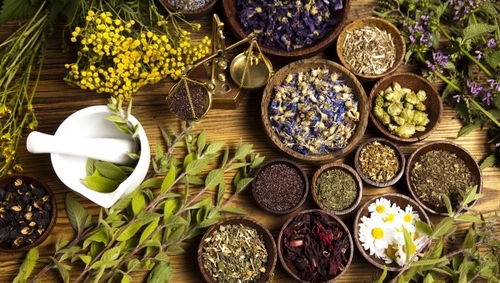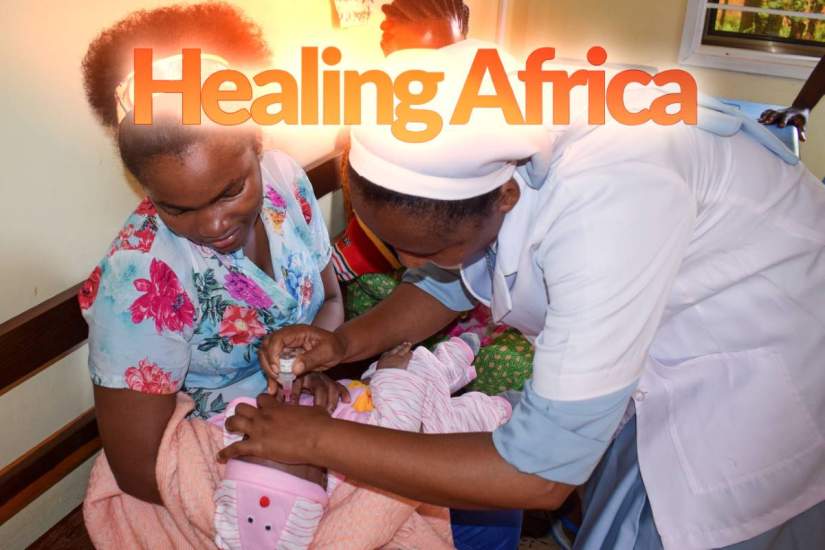Herbal Medicine vs. Modern Medicine: Can They Coexist?

Introduction
Herbal medicine refers to the use of plants and natural extracts for the prevention and treatment of illnesses, a practice that has been passed down for centuries across cultures. In contrast, modern orconventional medicine relies on scientifically developed drugs, surgical techniques, and diagnostic tools to manage and cure diseases. While one is rooted in tradition and nature, the other thrives on laboratory research and technological advancement.
Historically, herbal remedies were the primary source of healthcare in ancient civilizations such as Egypt, China, India, and Africa, where plants like aloe vera, turmeric, neem, and ginger were used for healing. Even today, many communities continue to rely on these practices, especially in regions where access to conventional medicine is limited. At the same time, modern medicine has grown into a global standard of healthcare, credited with increasing life expectancy, eradicating epidemics, and managing complex diseases.
This long-standing debate over which system is “better” has become more relevant than ever, especially with rising healthcare costs, growing interest in natural wellness, and increasing awareness of the side effects of pharmaceutical drugs. The real question, however, is not whether herbal medicine should replace modern medicine, but whether both can coexist in a complementary way to improve healthcare outcomes.
Herbal Medicine: Origins and Benefits
Herbal medicine is one of the oldest forms of healthcare known to humanity, deeply embedded in the traditions and cultures of civilizations across the world. In Africa, roots, leaves, and barks were prepared as remedies for fevers, infections, and childbirth-related complications. Ancient Egypt recorded the medicinal use of plants like garlic and aloe vera, while Traditional Chinese Medicine (TCM) and Ayurveda in India built entire healing systems around plant-based therapies. These practices were not merely about curing illnesses but were tied to spirituality, balance, and communal well-being.

Photo credit: Pinterest
Some of the most common herbal remedies remain widely used today. Ginger, for instance, is valued for its anti-inflammatory and digestive benefits. Aloe vera is applied for burns, skin conditions, and hydration. Neem has antibacterial and antifungal properties, making it a staple in both skincare and oral care. Turmeric, long used in Indian traditions, has gained global recognition for its antioxidant and anti-inflammatory qualities. These plants exemplify how nature provides accessible healing agents that have stood the test of time.
The benefits of herbal medicine often make it the first point of care, especially in resource-limited regions. It is generally more affordable and accessible compared to conventional medicine, requiring minimal infrastructure for preparation and use. Many also view it as having fewer side effects since it is derived from natural sources, although this perception can sometimes overlook issues of dosage and toxicity. Beyond treating symptoms, herbal remedies emphasize holistic healing, addressing not just the body but also mental and spiritual health in a way that resonates with cultural identity and personal beliefs.
Modern Medicine: Science and Innovation
Modern medicine, also referred to as conventional or allopathic medicine, has evolved rapidly over the past two centuries, reshaping how societies approach health and disease. Rooted in biomedicine, it is built on rigorous scientific research, clinical trials, and technological innovation. The discovery of antibiotics like penicillin, the development of vaccines, and the rise of advanced pharmaceuticals have transformed healthcare from a practice based largely on tradition into one driven by evidence, precision, and reproducibility.

Photo credit: Pinterest
One of modern medicine’s key strengths lies in its evidence-based approach. Treatments are tested through systematic trials and peer-reviewed studies, ensuring both safety and efficacy. Unlike many traditional remedies where dosage is often approximate, modern medicine relies on standardized formulations and dosage guidelines, minimizing the risk of underdosing, overdosing, or inconsistencies. This standardization allows it to be highly reliable, particularly in life-threatening or complex health scenarios.
Modern medicine also excels in situations where speed and precision are critical. Emergency care, such as treating heart attacks, strokes, or traumatic injuries often requires immediate intervention through drugs, surgery, or medical technology that herbal remedies cannot provide at the same pace or effectiveness. Similarly, for managing chronic illnesses like diabetes, hypertension, or cancer, pharmaceuticals and ongoing medical monitoring have proven indispensable, the role of modern medicine in infectious disease control cannot be overstated. Vaccination campaigns have eradicated smallpox, nearly eliminated polio, and controlled outbreaks of measles and other deadly diseases. Antibiotics and antivirals, though challenged by resistance in recent years, continue to be cornerstones in fighting bacterial and viral infections worldwide. Surgical innovation, from organ transplants to minimally invasive procedures, has also expanded the possibilities of survival and recovery for millions.
In essence, modern medicine represents the fusion of science and innovation with human health needs. While not without its limitations and criticisms — such as high costs, side effects, and overdependence on pharmaceuticals, it remains a powerful tool that has saved countless lives and extended global life expectancy.
Limitations of Each System
While both herbal and modern medicine have proven benefits, neither system is without flaws. Their limitations highlight the importance of critical evaluation and responsible use in healthcare.
Herbal Medicine
One of the major challenges of herbal medicine is the lack of regulation and standardization. Many herbal remedies are sold without proper dosage guidelines, quality control, or scientific testing. This means that the potency of herbs can vary significantly depending on how they are grown, harvested, or prepared, making consistent results difficult to achieve. Additionally, while often considered “natural,” herbs are not automatically safe. Some can be toxic in large quantities, interact dangerously with prescribed drugs, or cause allergic reactions.
Modern Medicine
Despite its scientific strengths, modern medicine also comes with notable drawbacks. Chief among them are high costs, which make healthcare inaccessible for millions, especially in developing countries. Many life-saving drugs and procedures remain out of reach due to pricing and lack of infrastructure. Furthermore, pharmaceuticals often come with side effects, ranging from mild discomfort to severe complications. The rise of over-prescription and dependence on drugs, such as opioids for pain management, has also created a global crisis of drug dependency and abuse. Beyond this, modern healthcare systems can sometimes prioritize profit over patient well-being, leading to mistrust and over-medicalization of conditions that might be managed differently.
Shared Misconceptions and Misuse
Both systems also suffer from misconceptions and misuse. In herbal medicine, the myth that “natural means safe” can encourage reckless use without medical guidance. In modern medicine, patients may place blind faith in pharmaceuticals without considering lifestyle or preventive measures. Both extremes reveal a common issue: when medicine, traditional or modern is misapplied or misunderstood, it risks doing more harm than good.
Can They Coexist?
The debate between herbal and modern medicine should not necessarily be framed as a battle for supremacy but as a search for balance and complementarity. In many parts of the world, the two systems already coexist successfully through models of integrative medicine.
Integrative Medicine Models
Countries such as China and India have pioneered frameworks where traditional practices, Traditional Chinese Medicine (TCM) and Ayurveda, are officially recognized and integrated alongside modern biomedicine. Patients may receive herbal remedies for chronic conditions while also accessing advanced diagnostic tools and surgical care. Similarly, in some African nations, there is growing interest in incorporating African traditional medicine into formal healthcare systems, acknowledging its cultural relevance and accessibility.
WHO’s Stance on Traditional Medicine
The World Health Organization (WHO) has consistently emphasized the importance of traditional and herbal medicine, especially in developing countries where up to 80% of the populationrelies on it for primary care. WHO advocates for creating safety standards, regulating herbal products, and encouraging research to ensure that traditional medicine complements, rather than conflicts with, modern healthcare.
The Path to Collaboration
The real potential lies in fostering collaboration between the two systems. This requires:
Rigorous scientific research to test and validate herbal remedies.
Clear safety and quality standards to protect patients from harmful products.
Cultural acceptance, ensuring that traditional knowledge is respected while modern innovations are applied where necessary.
By combining the holistic wisdom of herbal medicine with the precision of modern medicine, healthcare systems can become more inclusive, affordable, and effective.
Ethical and Safety Concerns
While the coexistence of herbal and modern medicine holds great promise, it also raises significant ethical and safety challenges that must be addressed.
Intellectual Property and Indigenous Knowledge
Many herbal remedies originate from indigenous communities that have preserved this knowledge for centuries. However, without proper safeguards, there is a risk of biopiracy, where pharmaceutical companies exploit these traditions for profit without acknowledging or compensating the communities and individuals that developed them. Protecting indigenous intellectual property rights is crucial to ensure that traditional healers and communities benefit from their contributions.

Photo credit: Pinterest
Exploitation by Pharmaceutical Industries
The growing demand for herbal products has attracted multinational pharmaceutical and cosmetic companies. While this can promote research and accessibility, it also poses the danger of commercial exploitation, where the focus shifts from patient well-being to profit-making. This can result in inflated prices for herbal-based medicines or the dilution of traditional practices to fit market needs, ultimately undermining their authenticity.
Patient Safety and Clinical Testing
One of the most pressing issues is ensuring patient safety. Unlike modern drugs, which undergo rigorous clinical trials, many herbal remedies enter the market with little or no standardized testing. This lack of regulation can lead to problems such as inconsistent potency, contamination, or even toxicity. To prevent such risks, herbal medicines should be subjected to scientific validation, dosage standardization, and quality control, not to diminish their cultural value, but to guarantee safety and effectiveness for patients.
Conclusion
The debate between herbal medicine and modern medicine is not about replacing one with the other, but about recognizing the unique strengths and weaknesses of both systems. Herbal medicine carries centuries of cultural wisdom, accessibility, and affordability, while modern medicine offers evidence-based precision, innovation, and life-saving interventions in emergencies. Each has its place, but neither is perfect on its own.
For true coexistence, there must be mutual respect, proper regulation, and rigorous scientific research to bridge the gap. Protecting indigenous knowledge, ensuring patient safety, and fostering collaboration between traditional healers and medical professionals can create a more holistic and inclusive healthcare system.
Ultimately, the question remains: Can a balance be struck between tradition and science to shape the future of healthcare?
Recommended Articles
Celebrity Health Scare: DiCaprio & Lineker Battles Highlight Dangerous Pneumonia Surge!

Pneumonia has recently impacted several celebrities, including Leonardo DiCaprio, Diane Keaton, Val Kilmer, and Wayne Li...
Rwanda's AI Future Ignites: Gates Foundation Pours $17.5M into Scaling Hub

Rwanda has secured a significant $17.5 million investment from the Bill & Melinda Gates Foundation to establish the Rwan...
The Church, the Shrine, and the Hospital: Where Do Africans Really Go for Healing?

In Africa, faith and medicine collide as millions seek healing from churches, shrines, and hospitals. Can spirituality a...
You may also like...
Super Eagles' Shocking Defeat: Egypt Sinks Nigeria 2-1 in AFCON 2025 Warm-Up

Nigeria's Super Eagles suffered a 2-1 defeat to Egypt in their only preparatory friendly for the 2025 Africa Cup of Nati...
Knicks Reign Supreme! New York Defeats Spurs to Claim Coveted 2025 NBA Cup

The New York Knicks secured the 2025 Emirates NBA Cup title with a 124-113 comeback victory over the San Antonio Spurs i...
Warner Bros. Discovery's Acquisition Saga: Paramount Deal Hits Rocky Shores Amid Rival Bids!

Hollywood's intense studio battle for Warner Bros. Discovery concluded as the WBD board formally rejected Paramount Skyd...
Music World Mourns: Beloved DJ Warras Brutally Murdered in Johannesburg

DJ Warras, also known as Warrick Stock, was fatally shot in Johannesburg's CBD, adding to a concerning string of murders...
Palm Royale Showrunner Dishes on 'Much Darker' Season 2 Death

"Palm Royale" Season 2, Episode 6, introduces a shocking twin twist, with Kristen Wiig playing both Maxine and her long-...
World Cup Fiasco: DR Congo Faces Eligibility Probe, Sparks 'Back Door' Accusations from Nigeria

The NFF has petitioned FIFA over DR Congo's alleged use of ineligible players in the 2026 World Cup playoffs, potentiall...
Trump's Travel Ban Fallout: African Nations Hit Hard by US Restrictions

The Trump administration has significantly expanded its travel restrictions, imposing new partial bans on countries like...
Shocking Oversight: Super-Fit Runner Dies After Heart Attack Symptoms Dismissed as Heartburn

The family of Kristian Hudson, a 'super-fit' 42-year-old marathon runner, is seeking accountability from NHS staff after...
